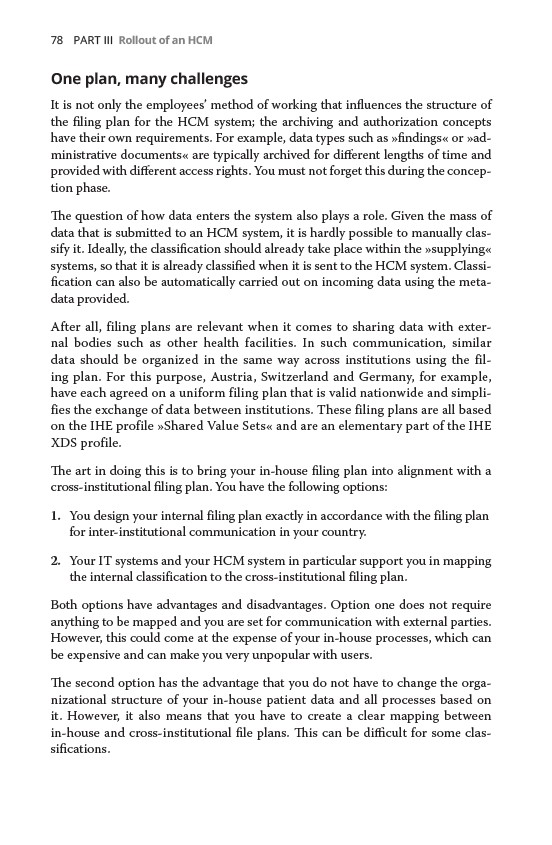
78 PART III Rollout of an HCM
One plan, many challenges
It is not only the employees’ method of working that influences the structure of
the filing plan for the HCM system; the archiving and authorization concepts
have their own requirements. For example, data types such as »findings« or »administrative
documents« are typically archived for different lengths of time and
provided with different access rights. You must not forget this during the conception
phase.
The question of how data enters the system also plays a role. Given the mass of
data that is submitted to an HCM system, it is hardly possible to manually classify
it. Ideally, the classification should already take place within the »supplying«
systems, so that it is already classified when it is sent to the HCM system. Classification
can also be automatically carried out on incoming data using the metadata
provided.
After all, filing plans are relevant when it comes to sharing data with external
bodies such as other health facilities. In such communication, similar
data should be organized in the same way across institutions using the filing
plan. For this purpose, Austria, Switzerland and Germany, for example,
have each agreed on a uniform filing plan that is valid nationwide and simplifies
the exchange of data between institutions. These filing plans are all based
on the IHE profile »Shared Value Sets« and are an elementary part of the IHE
XDS profile.
The art in doing this is to bring your in-house filing plan into alignment with a
cross-institutional filing plan. You have the following options:
1. You design your internal filing plan exactly in accordance with the filing plan
for inter-institutional communication in your country.
2. Your IT systems and your HCM system in particular support you in mapping
the internal classification to the cross-institutional filing plan.
Both options have advantages and disadvantages. Option one does not require
anything to be mapped and you are set for communication with external parties.
However, this could come at the expense of your in-house processes, which can
be expensive and can make you very unpopular with users.
The second option has the advantage that you do not have to change the organizational
structure of your in-house patient data and all processes based on
it. However, it also means that you have to create a clear mapping between
in-house and cross-institutional file plans. This can be difficult for some classifications.